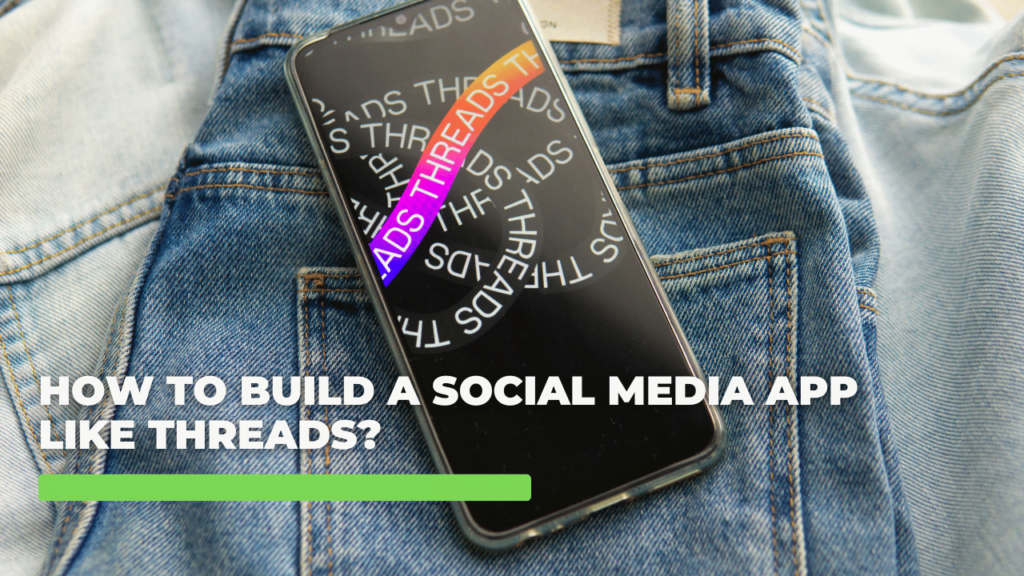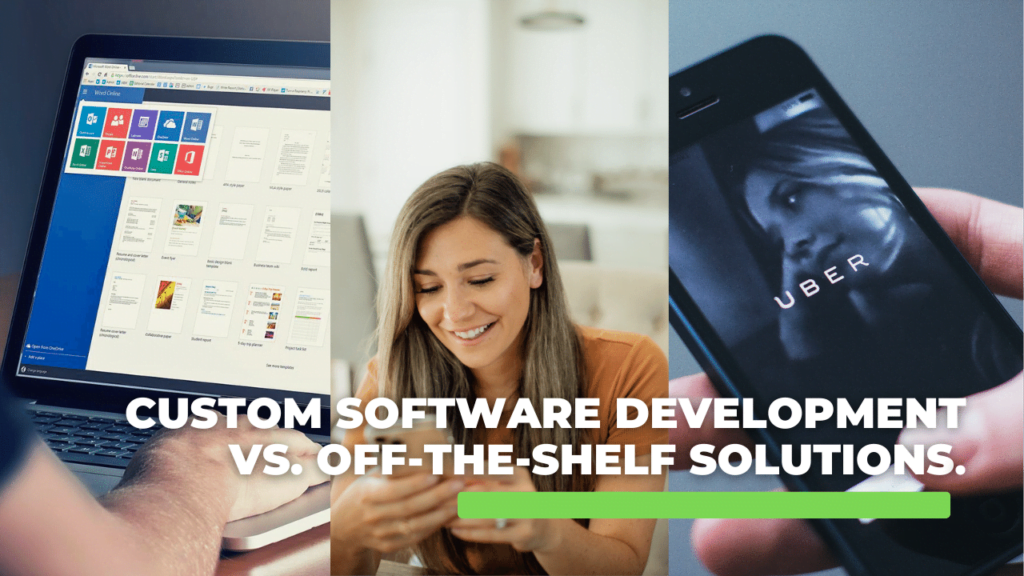Introduction
In recent years, the food delivery app market has seen an unprecedented surge, reshaping the landscape of dining and convenience. According to Statista, the global online food delivery segment amounted to approximately $136.4 billion in 2020 and is projected to reach $182.3 billion by 2024, reflecting a compound annual growth rate (CAGR) of 7.5%. This meteoric rise is fueled by the evolving consumer preferences for convenience, variety, and the seamless integration of technology in everyday life. In urban areas, especially, the demand for quick and efficient food delivery services has skyrocketed, making it a lucrative arena for entrepreneurs and businesses.
As the food app market experiences rapid growth, competition intensifies with many major players emerging. Today, we will explore how to develop such an application and delve into its unique features.
How to Make a Food Delivery App in 6 Simple Steps
Food delivery app – They bridge the gap between busy lifestyles and the desire for diverse, quality food options. From tantalizing local delicacies to international cuisines, these apps bring a world of flavors right to the doorstep. The beauty of a food delivery app lies in its ability to simplify the ordering process, offer personalized recommendations, and provide real-time tracking of orders, all while ensuring a secure and efficient transaction. It’s more than just an app; it’s a gateway to culinary exploration and convenience.
How exactly is a food delivery app developed? What factors should be considered first? Let’s examine the six fundamental steps involved in building a food delivery app
Step #1 — Validate Your Food Delivery App Idea
Before diving into the technicalities of app development, the first and foremost step is validating your food delivery app idea. This involves understanding your target audience, analyzing competitors, and identifying the unique value proposition your app will offer. Research plays a pivotal role here. Gathering data on consumer preferences, dining habits, and popular cuisine choices can offer invaluable insights. Additionally, assessing the strengths and weaknesses of existing food delivery apps can help in carving out a niche for your application. Validation at this stage is crucial to ensure that your app meets a real need and has a potential market.
Step #2 — Choose Your Food Delivery App Development Method
After validating your app idea, the next critical step is choosing the right development method for your food delivery app. There are primarily two paths you can take: building a custom app from scratch or using a white-label solution.
A custom app, developed either in-house or by a hired development team, offers complete control over the app’s features, design, and user experience. This option, while potentially more costly and time-consuming, allows for greater customization and uniqueness.
On the other hand, a white-label solution is a pre-built software that can be branded and modified to some extent to suit your needs. It’s a quicker and often more cost-effective option, but with limited customization possibilities. The choice depends on your budget, timeline, and the specific requirements of your business model.

Step #3 — Identify Your Food Delivery Business Model
The success of your food delivery app hinges significantly on the business model you choose. There are several models to consider, each with its own advantages and target markets. The most common include:
- Aggregator Model: Acting as a mediator between customers and local restaurants, this model lists multiple eateries on the app, allowing users to compare menus, prices, and reviews. Revenue is typically generated through commission fees from restaurants.
- Cloud Kitchen Model: Also known as ghost kitchens, these are delivery-only kitchens without a physical dining space, which significantly reduces overhead costs. This model is ideal for startups focusing solely on delivery.
- Subscription Model: Offering a subscription for either unlimited deliveries or special discounts can foster customer loyalty and ensure a steady revenue stream.
- Hybrid Model: Combining features of various models, the hybrid approach offers flexibility to cater to a broader market by providing multiple services like on-demand and pre-scheduled deliveries.
Your choice should align with your market research, resources, and long-term vision for the app. Understanding the target audience’s preferences and the logistics involved in each model will guide you in making an informed decision.
Step #4 — Select Your Features
The feature set you choose will play a pivotal role in defining the user experience and functionality of your food delivery app. Essential features to consider include:
- User-Friendly Interface: An intuitive and easy-to-navigate interface is vital for retaining users. It should include simple search filters, clear categories, and a straightforward ordering process.
- Multiple Payment Options: Incorporating various payment methods such as credit/debit cards, e-wallets, and cash on delivery caters to a wider audience and enhances user convenience.
- Real-Time GPS Tracking: Allowing customers to track their order in real-time increases transparency and customer satisfaction.
- Rating and Review System: A feature for customers to rate and review their experiences helps build trust and provides valuable feedback for service improvement.
- Personalized Recommendations: Using data analytics to offer personalized menu suggestions can significantly enhance the user experience.
- Customer Support: An accessible and responsive customer support system is essential for handling inquiries and resolving issues promptly.
While these are fundamental features, the scalability of your app should be considered to allow the addition of more advanced features, like AI-driven chatbots or integration with social media platforms, as your business grows.

Step #5 — Design and Development
With your app’s features and business model in place, it’s time to move into the design and development phase. This stage is all about bringing your vision to life. Key considerations include:
- User-Centric Design: The design should focus on user experience (UX) and user interface (UI). A clean, appealing, and intuitive design can significantly enhance user engagement. It’s essential to create an interface that is both aesthetically pleasing and functional.
- Robust Backend Development: The backend of your app is its backbone. It needs to be robust and scalable to handle high volumes of orders, maintain data security, and ensure smooth operation. Technologies like cloud computing can offer the necessary scalability.
- Frontend Development: The frontend is what your users will interact with. It should be responsive, fast, and consistent across different devices and platforms. Using frameworks like React Native or Flutter can aid in building a cross-platform app efficiently.
- Testing and Quality Assurance: Rigorous testing is crucial to ensure your app is free from bugs and glitches. This phase includes testing app performance, user experience, security, and more.
- Iterative Development: Adopt an agile approach to development, allowing for regular feedback and iterative improvements. This process ensures the app evolves according to user needs and market trends.
Developing a food delivery app is a complex task that requires a skilled team of designers, developers, and testers. Choosing the right team and technology stack is vital for building a successful app.
Step #6 — Marketing and Launch
The final step in bringing your food delivery app to the market is a well-strategized launch and marketing plan. Here are the key components:
- Pre-Launch Campaign: Generate buzz before the app goes live. This can be achieved through social media teasers, email marketing, influencer collaborations, and press releases.
- App Store Optimization (ASO): Optimize your app’s listing in app stores with compelling descriptions, relevant keywords, and high-quality visuals to improve visibility and attract downloads.
- Launch Event: Consider hosting a launch event, virtual or physical, to announce the app’s release. This can attract media attention and create initial user interest.
- Promotional Offers: Entice initial users with special promotions, discounts, or free delivery offers. This strategy can encourage downloads and trial of the app.
- Digital Marketing: Utilize digital marketing channels like Google Ads, social media advertising, and content marketing to target your audience effectively.
- Feedback Loop: Post-launch, actively seek user feedback and reviews. This information is crucial for continuous improvement and for addressing any issues promptly.

‘Get almost, almost anything’: Uber Eats and Special launch new brand platform after 5 years
Key Features of a Great Food Delivery App
A successful food delivery app is not just about delivering food; it’s about creating an exceptional user experience. Here are some key features that can set your app apart:
- User Registration and Profile Management: Allow users to easily register and manage their profiles. This feature should enable them to save their favorite dishes, addresses, and payment methods for a quicker ordering process.
- Search Functionality: Implement a robust search feature with filters for cuisines, dietary preferences, price range, and ratings. This makes finding the perfect meal both easy and enjoyable.
- Payment Integration: Secure and versatile payment options, including credit/debit cards, digital wallets, and cash on delivery, cater to all user preferences and enhance the convenience factor.
- Coupons and Loyalty Rewards: Offering coupons, discounts, and loyalty rewards not only attracts new users but also encourages repeat business, fostering a loyal customer base.
- Push Notifications: Use push notifications wisely to keep users informed about new offers, order status updates, and personalized recommendations without being intrusive.
- Delivery Tracking: Real-time delivery tracking is essential for transparency and customer satisfaction, allowing users to see exactly when their food will arrive.
How Much Does Food Delivery App Development Cost?
The cost of developing a food delivery app varies widely based on several factors, including the complexity of the app, the chosen platform (iOS, Android, or both), the geographical location of the development team, and the specific features you want to include. On average, a basic food delivery app can cost anywhere from $20,000 to $40,000, while more advanced apps with custom features and integrations can exceed $100,000.
Key cost drivers include:
- App Design: Custom UI/UX design can be a significant expense, especially if you’re aiming for a highly engaging and unique user interface.
- Development: Costs will vary depending on whether you hire freelance developers, a development agency, or have an in-house team. The complexity of features also plays a role.
- Backend Infrastructure: Robust server support, data storage, and maintenance are essential and contribute to ongoing costs.
- Testing and Quality Assurance: Ensuring the app is bug-free and user-friendly requires thorough testing, which incurs additional costs.
- Marketing and Launch: Budget for marketing and promotional activities is crucial for a successful launch and should be factored into the overall cost.
Remember, while the initial development cost is significant, ongoing maintenance and updates are also essential for the app’s long-term success.
Conclusion
Entering the food delivery app market requires a blend of strategic planning, understanding of market dynamics, and careful allocation of resources.
The investment in a food delivery app can be substantial, with costs varying based on app complexity, design, development approach, and additional features. However, the potential return in this rapidly growing market can be equally significant. It’s essential to remember that the journey doesn’t end with the launch; ongoing maintenance, updates, and adaptation to user feedback and market trends are key to sustaining success.
As the food delivery market continues to evolve, staying ahead of the curve with innovative features, efficient service, and a keen understanding of customer preferences will be vital. With careful planning and execution, your food delivery app can not only enter the market but thrive in it, catering to the ever-growing demand for convenience and variety in the culinary world.













